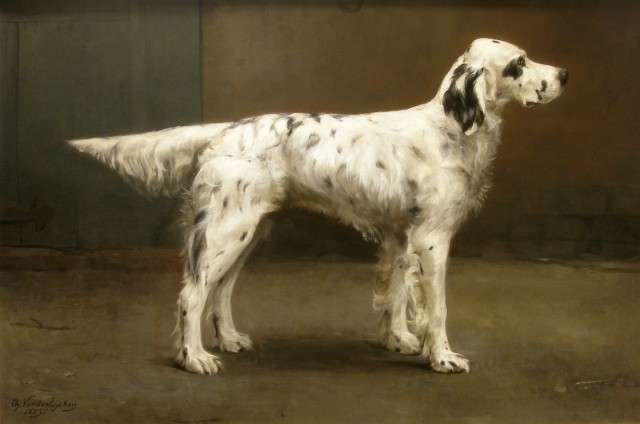Charles H. Van Den Eycken
(1859 - 1923)
Charles van den Eycken was raised in a family where both his father and grandfather were painters. Not surprisingly, he received his earliest art education under their guidance
In the mid-1870s, he moved to Brussels to continue his education at the Académie Royale des Beaux-Arts where he studied with Joseph Edouard Stevens (1819-1892), a Realist animal painter. Van den Eycken absorbed his mentor’s attitude as well as his predilection for animal painting. When he emerged from his schooling, he had exemplary drawing skills, an impressive understanding of composition, and a clear sense of direction for his future.
Van den Eycken was an early member of the exhibition society known as L'Essor [Soaring], which was founded in 1876 as the Cercle d'Elèves and anciens Elèves des Académies des Beaux-Art (Circle of Students and Alumni of the Schools of Fine Arts
Beginning in 1881, he regularly sent his work to salons in Antwerp, Amsterdam, Barcelona, Ghent, Liège and Madrid as well as the annual Exposition générale des beaux-arts in Brussels where his work was recognized with several medals. Van den Eycken also received a commission from Belgium’s Queen Marie-Henriette who loved both art and dogs; it is likely that the artist created a painting of dogs for her personal enjoyment.
By the 1890s, van den Eycken had established himself as a leader in this then fashionable specialization, and his popularity with collectors was continuing to expand. His painting Gage of Love, was chosen as part of the Belgian contribution to the World’s Columbian Exposition in Chicago in 1893. Three years later, he was recorded as having received a commission from a Chicago attorney, J. G. Moulton for a painting entitled A Cat with her Kittens.
Van den Eycken’s work maintained a consistent appeal well into the twentieth century. He exhibited Les rôdeurs [The Prowlers] at Paris Salon in 1902, and also continued to sell his work to numerous English collectors. It should be noted that the painter sometimes signed his name as “Charles Duchêne” although the reason for this is unclear. “Duchêne” refers to oak trees in French, and perhaps there was a family history related to this name or the oak as a symbol.
He died in 1923 at age sixty-four.
